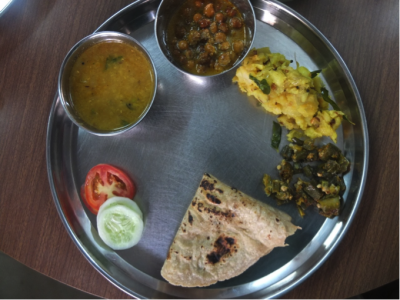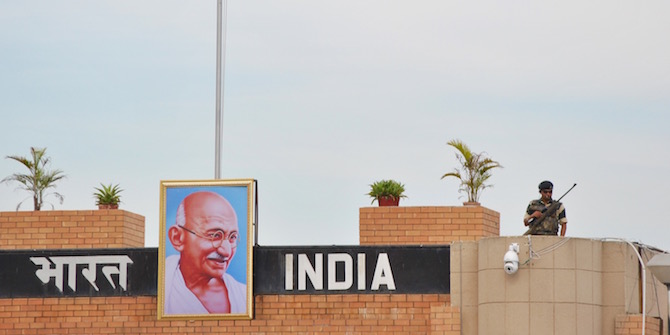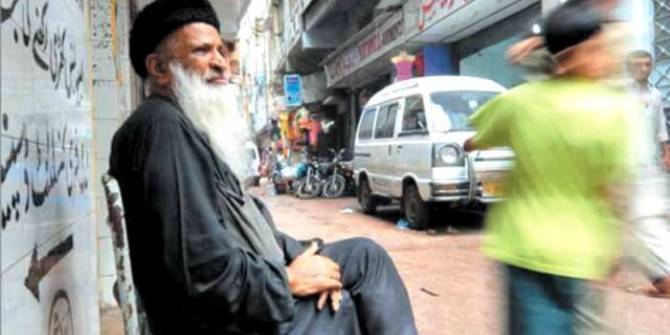Drawing on his PhD fieldwork, Ken Kuroda proposes that dal – which comes in diverse guises yet is ubiquitous throughout the country – is the best contender for India’s national dish. He writes that observing how someone prepares and consumes their dal, and what they add or subtract from this basic unit offers an important insight on the structures of society.
With the annual Republic day of India parades just gone on 26 January, I am thinking about what other foods for thought exist which can illuminate postcolonial nationalisms in South Asia. For Appadurai (1988), contemporary Indian cookbooks are a platform for its middle-class audiences to access, remix, and disseminate various stereotyped “regional” and “national” cuisines. In accordance with Republic day parades, “eating and being Indian”, through such cosmopolitanisms, are invariably imagined as projects of celebrating national and international diversity. The selective politics behind such projects not withstanding (will Dalit foods be allowed to be part of such a repertoire?), any attempt to come up with one national dish that represents the whole of India is in danger of causing bloody disputes between communities, a problem which the United Kingdom had resolved in 2001 by exclaiming: Chicken Tikka Masala!
But the intimate politics of food is not confined to such secular imaginaries – the potency of food lies in the way it arouses memory and belonging in emotive ways. A 2-minute long, 2014 advert by Fortune Cooking Oils, where a grandmother and nurse fight over two spoonfuls of dal (cooked lentils), is a good example of such visceral mobilisations.

Fortune Edible Oils and Foods, “Grandmother”, by Oglivy and Maher India, 2014.
I propose that this unassuming yellow or brown pulp which is dal, would be the best contender for India’s national dish. It is consumed throughout the country (in the advert even the nurse feeds dal to the patient, albeit in its watery, hospital food version), and along the word ghar-ka-khana (homemade food), dal-chawal (dal and rice) carries with it the multivalent values of comfort, motherhood, purity, simplicity, nourishment, and hygiene.
In order to substantiate this claim, let us examine the substance. Dal is very often coupled with chawal (rice), and is considered a staple source of protein, light on the stomach but at the same time filling, enjoyed by all from the rich to the poor, Hindu or Muslim, vegetarian or not. The simplicity of the cooking procedure, which consists of mixing the slow-cooked lentils with tempered spices and herbs (tadka), invites much creativity and skill, where the use of spices and additional ingredients for the tadka reflecting the cook’s culinary and regional background – for example, the Maharashtran Brahmins specially called theirs amti bhat, who liked to sweeten their dal with jaggery, and their signature sweet and nutty goda masala. It is often said that, much like the omelette in the West, if you want to taste the worth of a cook, let them cook dal chawal.
Importantly, its ubiquity and versatility did not mean that it was available to all in equal amounts: the retail prices of pulses and lentils have been soaring over the past few years, depriving the urban and rural poor of their key source of protein. So what do these families do? They dilute the dish with extra water, using only the minimum amount of pulses for it to just pass as dal. However watery it may be, eating dal gave a sense of comfort and unity within the family. For my Dalit friend, brought up on this patla patla (thin) concoction, the sweet and thick Brahmin dal was a sign of their material abundance and social privilege. In this way, dal not only entailed variety of culinary style, but also social distinction on lines of class and caste. In the spirit of Mary Douglas (1972), we can say that dal chawal is an elementary component of the Indian meal structure, also offering an important commentary on the structures of society.
Looking at what a person adds or subtracts from this basic unit tells us a lot. The thali (plate in Hindi, Fig.1.) is the full expression of the ideal Indian meal, consisting of a variety of subzi (cooked vegetables), chapatti (flat bread), and other condiments (pickles, salad, curd, fruit, sweets, etc.) alongside the dal and chawal. The dishes are laid onto the table all at once, to which each participant takes suitable portions to construct their own thali. Savouring a variety of tastes, colours, and textures, this is the epitome of Indian culinary indulgence. Such a banquet is a dream upon a dream for the toiling classes, whose lunches and dinners often consisted only of a plate of rice with a few bites of other readily available condiments, such as onion, salt, green chillies, and lemon. But if you ask what they would add to their meal had they been able to afford it, it would invariably be dal, and having subzi on top of that would be reserved on very special occasions. On the other end of spectrum are some of the middle classes who entirely neglect dal chawal, or at least the rice, for the sake of “cutting down on carbs”, who may exercise their social distinction through seasonal vegetables, larger quantities of meats, or the inclusion of “Western” dishes.

Fig.1. A thali lunch in an office canteen: 2 dals, 2 subzis, chapatti, and salad. Photo by author.
To tabulate:
- Rice + condiments
- Rice + watery dal
- Rice + dal + condiments (+ chapatti)
- Thali = Rice + dal (with chaunk) + subzi + chapatti + condiments
- Any amount of elaboration from 4., including Western dishes. Conscious restraining and subtraction marks refinement.
This scale is a rule of thumb to assess the socio-economic purchasing power and tastes of Indians as seen through everyday evening meals. To this list, one should also add khichdi, made by cooking dal and chawal together. An important proscription in Indian is to mix one’s food immediately before eating it – the distinction of each dish corresponds to the social distinction of the eater. Khichdi breaks this boundary, and as such, is not a proper food for sociable adults to be eating. Instead, it is cherished by children, the very elderly, and those recovering from sicknesses. It is indicative that these liminal beings, united in their state for being outside householder status, mainly feed on this amorphous deformation of dal chawal.
Having grounded the discussion as such, we can finally return to the advert. What is an inert yellow lentil dish for someone not accustomed to South Asia, is something which has deep moral and material significance for those who have been inculcated to appreciate and live by these, through intimate practices of feeding, eating, tasting, and digesting. In this regard, the “Indian-ness” that is enacted here is so much more tactile than the sober cataloguing and display of stereotyped regional diversity which Appadurai talks about, for the unit of association is not a reified “region” or “culture”, but real families and rooted experiences.
But is this “family” not reified in its own way? In the advert, Dadi’s (grandmother’s) dal becomes an effective emotive trigger for those who lived with some level of material affluence within a functioning family. It also seems to be celebrated most by middle class, global-Indians, who enjoy their new found material wealth and Westernised tastes whilst trying to establish meaningful connections to their “families”, “roots”, “homelands”, and “tradition” – ghar-ka-khana, and dadi’s dal, address these anxieties intimately. In contrast, showing the advert to my Dalit activist friend brought up on watery dal, he bitterly said: “For me, my dal is not comfort, but a remembrance of our struggle,” aligning his experiences to the causes of Amebedkarite (anti-Brahmanical) activism. Thus, dal presents us with at least two different kinds of struggles, and a single question: who’s nation are we talking about?
This article gives the views of the author, and not the position of the South Asia @ LSE blog, nor of the London School of Economics. Please read our comments policy before posting.
About the Author
Ken Kuroda is a PhD candidate from 2013 at the Department of Anthropology, LSE. He conducted 15 months ethnographic fieldwork between October 2014 and January 2016, researching the politics and ethics of food in Mumbai, India. His doctoral thesis focuses on how the circulation of tiffins (homemade lunchboxes) within the city comprises an ethically charged network, connecting vast numbers of cooks and eaters in intimate ways.







